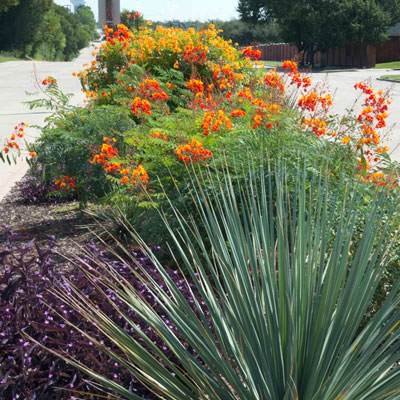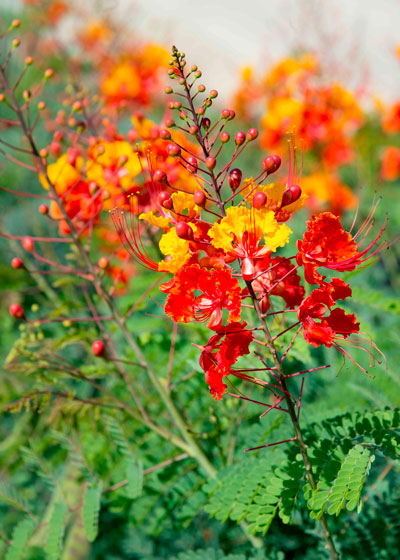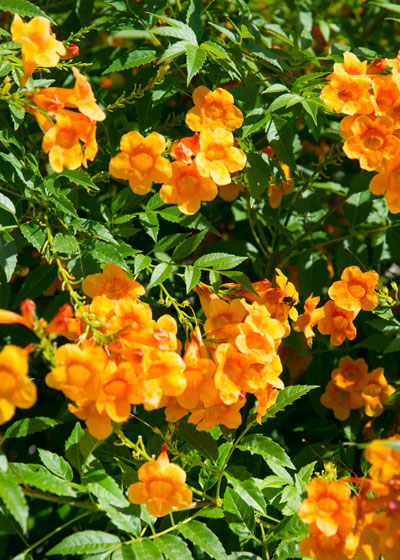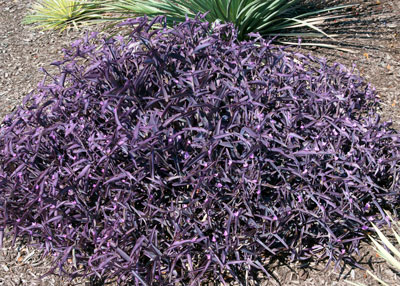Made Me Go Back!
I had another story just about finished for this issue of e-gardens. I’ll use it another time, because after finishing our extensioned (I know – it’s not really a word) 2015 taxes and turning them in yesterday morning we decided to celebrate with a great burger at Kelly Family Farms (the food truck) in Lucas or Allen or wherever they are. On our way, we passed this median on Bethany a couple of miles east of Central in Allen – almost to Jupiter.
Lynn was driving. “Stop. I’ve gotta have photos!” I said to her. So we turned around and she waited patiently while I fired off 20 or 30 exposures. These are only a few.

Median on Bethany just west of Jupiter in Allen. Photo taken September 21 at 11:45 a.m. in case you saw me and wondered what on earth I was doing.
Let me explain why this median caught my eye. Oh, we all can see that it’s beautiful. But it also represents glorious color. Real, actual color and hard effort in the middle of a busy street. No tired, dying “ornamental” grasses here, but great plants that were excited to show off their stuff. All with low water consumption to boot. Let’s take partial inventory.
Pride of Barbados
Pride of Barbados goes first. It’s the closer of the two orange-flowering beauties. Also called red Mexican bird of paradise, it’s botanically Caesalpinia pulcherrima. You’ll see it frequently the farther south you go in Texas (not as often in settings like this in North Central Texas). It’s used with great abundance in Austin and San Antonio and southward, and Tiger Swallowtails abound around it. (But not so much in this 40 mph median.)

Photo: Pride of Barbados brings a real tropical look to its surroundings.
Orange Jubilee Esperanza
Farther east in the median you see Orange Jubilee Esperanza. It’s now given its own species name, Tecoma alata according to Arizona State University. That sets it apart from Gold Star Esperanza, a long-proven and highly popular Texas performer that’s a selection of Tecoma stans. Orange Jubilee grows to be 4 to 6 feet tall and wide (larger toward the Gulf Coast, and its trumpet-shaped flowers keep coming all summer and way into fall.

Photo: If you love Gold Star Esperanza, you’ll be just as fond of its cousin Orange Jubilee.
Both of these plants require full sun and heat to meet their potential. With regular watering via a working drip irrigation system, they are basically sources of no-care color. While they may or may not survive winters as far north as Allen (especially in raised median beds), they certainly will come back for gardeners in the southern half of the state.
Purpleheart
And the third superior plant in the package is our old favorite purpleheart. It performs like the sorbet between spicy courses of a fine meal. It’s a relative of wandering Jews, but unlike those cousins, purpleheart (Setcreasea pallida) is winter-hardy in almost all of our state. It dies to the ground, but it re-emerges the following spring to provide great color for a groundcover. It, too, loves sun and heat, and it, too, seems to have no pests that bother it.

Photo: Not many plants are this purple for this long every year. Purpleheart makes an unusual perennial groundcover.
Hope you’ve enjoyed this little travelogue into the east side of Allen. Each of these plants is one you ought to consider at your place next year.
Thanks, Allen, for the delight you provide all who pass by. Sperrys included.
